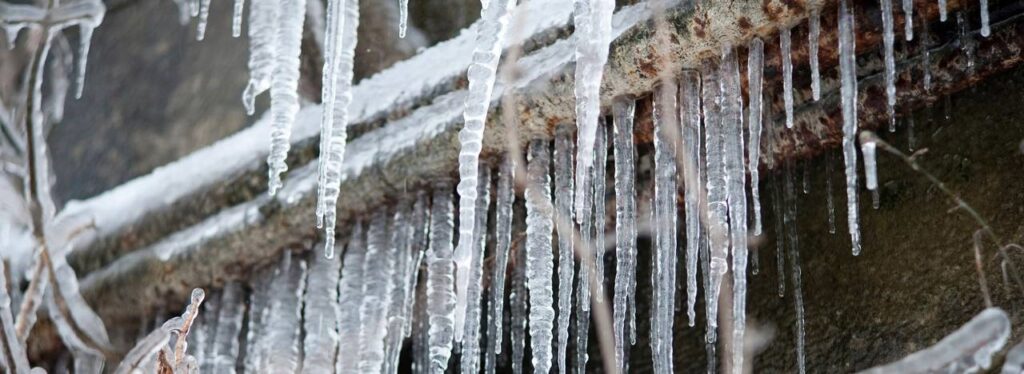Important Advice for Preventing Frozen Pipes in Cold Weather Seasons
Important Advice for Preventing Frozen Pipes in Cold Weather Seasons
Blog Article
The article on the next paragraphs involving Winter Plumbing Precautions: Preventing Frozen Pipes is without a doubt entertaining. Have a go and draw your own results.

Winter can ruin your pipes, specifically by freezing pipelines. Below's how to stop it from occurring and what to do if it does.
Intro
As temperatures decline, the risk of frozen pipes rises, possibly bring about pricey repair work and water damages. Comprehending just how to prevent icy pipelines is important for home owners in cold environments.
Recognizing Frozen Pipelines
What causes pipelines to freeze?
Pipelines freeze when exposed to temperatures listed below 32 ° F (0 ° C) for prolonged durations. As water inside the pipelines ices up, it increases, taxing the pipe walls and potentially triggering them to burst.
Dangers and problems
Icy pipelines can bring about water disruptions, building damage, and pricey repair work. Burst pipes can flood homes and trigger considerable architectural damage.
Signs of Frozen Piping
Identifying icy pipes early can prevent them from breaking.
Exactly how to recognize frozen pipes
Try to find decreased water circulation from faucets, unusual odors or noises from pipes, and noticeable frost on exposed pipes.
Prevention Tips
Protecting susceptible pipelines
Wrap pipes in insulation sleeves or make use of heat tape to protect them from freezing temperature levels. Concentrate on pipelines in unheated or external locations of the home.
Home heating techniques
Maintain interior rooms effectively heated up, specifically locations with plumbing. Open cabinet doors to permit warm air to distribute around pipelines under sinks.
Safeguarding Exterior Pipes
Garden hose pipes and outside faucets
Disconnect and drain pipes garden hoses before winter. Install frost-proof faucets or cover outdoor faucets with insulated caps.
What to Do If Your Pipes Freeze
Immediate activities to take
If you presume frozen pipes, keep taps open up to alleviate pressure as the ice thaws. Make use of a hairdryer or towels soaked in hot water to thaw pipelines gradually.
Long-Term Solutions
Architectural changes
Think about rerouting pipes away from exterior wall surfaces or unheated areas. Add additional insulation to attic rooms, basements, and crawl spaces.
Updating insulation
Buy premium insulation for pipes, attics, and wall surfaces. Appropriate insulation helps maintain constant temperature levels and reduces the danger of frozen pipelines.
Final thought
Preventing frozen pipes needs proactive steps and fast responses. By recognizing the causes, signs, and safety nets, house owners can secure their plumbing throughout winter.
5 Ways to Prevent Frozen Pipes
Drain Outdoor Faucets and Disconnect Hoses
First, close the shut-off valve that controls the flow of water in the pipe to your outdoor faucet. Then, head outside to disconnect and drain your hose and open the outdoor faucet to allow the water to completely drain out of the line. Turn off the faucet when done. Finally, head back to the shut-off valve and drain the remaining water inside the pipe into a bucket or container. Additionally, if you have a home irrigation system, you should consider hiring an expert to clear the system of water each year.
Insulate Pipes
One of the best and most cost-effective methods for preventing frozen water pipes is to wrap your pipes with insulation. This is especially important for areas in your home that aren’t exposed to heat, such as an attic. We suggest using foam sleeves, which can typically be found at your local hardware store.
Keep Heat Running at 65
Your pipes are located inside your walls, and the temperature there is much colder than the rest of the house. To prevent your pipes from freezing, The Insurance Information Institute suggests that you keep your home heated to at least 65 degrees, even when traveling. You may want to invest in smart devices that can keep an eye on the temperature in your home while you’re away.
Leave Water Dripping
Moving water — even a small trickle — can prevent ice from forming inside your pipes. When freezing temps are imminent, start a drip of water from all faucets that serve exposed pipes. Leaving a few faucets running will also help relieve pressure inside the pipes and help prevent a rupture if the water inside freezes.
Open Cupboard Doors
Warm your kitchen and bathroom pipes by opening cupboards and vanities. You should also leave your interior doors ajar to help warm air circulate evenly throughout your home.

We were shown that editorial about How to Prevent Your Pipes From Freezing through an associate on a different web page. Enjoyed reading our piece of writing? Please share it. Help other people find it. I take joy in your readership.
Visit Url Report this page